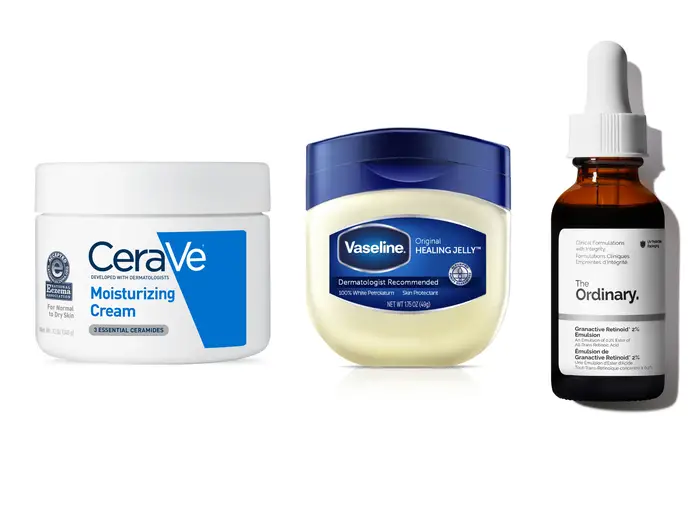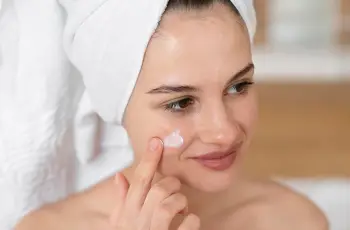
Are Expensive Skincare Products Worth the Price?
Have you ever stood in a skincare aisle wondering if that $120 serum is really better than the $20 one? You’re not alone.
Many people wonder whether luxury skincare is worth the investment or just hype in a fancy bottle.
The short answer? It depends—mainly on your Baumann Skin Type and the specific needs of your skin. Just like not every shoe fits every foot, not every product suits every skin type. Let’s break it down.
What Determines if Expensive Skincare Is Worth It?
Before deciding to splurge or save, it’s important to understand what you’re paying for in high-end skincare. Is it quality ingredients? Celebrity branding? Fancy packaging? Sometimes all three.
Some expensive skincare products are absolutely worth the price. Others are not much different from cheaper versions on the shelf at your local drugstore.
Start With Your Skin Type
The most effective way to know what your skin truly needs is to take a Baumann Skin Type quiz. There are 16 types, each with unique needs.
A product that’s great for one type might not help—or might even harm—another.
Once you know your skin type, you can figure out which ingredients are worth investing in and which products you can save money on.
What You’re Really Paying For in Expensive Skincare
Let’s say you’re looking at a face serum. One costs $15, the other costs $150. Why the massive difference?
It’s rarely about just one thing. Here’s what can drive up the price of skincare:
1. Ingredients
High-end products may contain rare or highly refined ingredients. But some expensive ingredients aren’t better—they’re just trendy.
For example:
Hyaluronic acid serums are widely available and work similarly across price ranges. You can save money here.
Vitamin C serums, on the other hand, often require stabilized, high-quality forms to work well. A cheap version might oxidize and become useless.
2. Formulation
Formulation is how the product is made—not just what goes into it, but how it’s put together. This matters a lot more than people think.
Just like baking, the same ingredients can produce wildly different results depending on the process. The order of mixing, temperature, and conditions all matter.
A well-formulated product:
Helps ingredients penetrate the skin better.
Keeps active ingredients stable and effective.
Works in harmony with other steps in your routine.
Bad formulation means even expensive ingredients may do nothing—or worse, cause irritation.
3. Packaging
Packaging isn’t just for looks. It affects how well a product lasts and performs. Airless, light-proof packaging keeps sensitive ingredients like antioxidants from degrading.
Cheap packaging might expose your product to air and light every time you open it, making it go bad faster.
4. Manufacturing Standards
Some products are made in state-of-the-art labs under strict standards. Others are mass-produced in less controlled environments. That difference shows in the final product’s quality.
You may not know all of this just from reading the label. That’s why expert advice is key.
Ingredients That Sound Fancy but Aren’t Always Worth It
Some luxury skincare ingredients are more about marketing than performance. Here are a few to be cautious of:
Bee venom, Caviar, Snake venom, Bird’s nest extract, Gold, Pearl powder, Plant-derived exosomes, EGF (Epidermal Growth Factor), Snail mucus, Stem cells, Overhyped peptides
These ingredients might offer benefits, but usually not enough to justify sky-high prices—especially if there’s limited research behind them.
When It Makes Sense to Splurge
Here are times when paying more might be justified:
When a product uses active ingredients in effective concentrations.
When the formulation is designed for your exact skin type.
When the packaging protects delicate ingredients.
When there’s solid research and clinical testing backing up the product.
When you’re buying from a medical-grade brand tested by dermatologists.
When to Save Your Money
Save when:
The main ingredient (like hyaluronic acid) works the same in cheaper products.
You’re buying basic cleansers or moisturizers that don’t need fancy actives.
The expensive option is using trendy or gimmicky ingredients with no proven benefits.
The high price comes from celebrity endorsements or branding, not quality.
High-End vs. Drugstore: The Truth
You might be surprised how similar some drugstore and luxury products are. They might even share manufacturers or ingredient suppliers.
Sometimes, a $20 product has nearly the same formula as a $200 one. But you won’t always know that, because companies don’t disclose their full manufacturing process.
What’s on the label is just part of the story.
Why Formulation Matters More Than Ingredients Alone
Let’s go back to the baking metaphor. Imagine two people baking cookies with the same ingredients. One follows a precise recipe. The other guesses.
Even though the ingredients are the same, the results will differ. The same is true with skincare.
For example:
Ceramides need to be added at a high temperature to mix properly.
Green tea extract can be destroyed at that same temperature.
So a skilled formulator will add them at different stages to preserve their power.
Little steps like these make a big difference in how well a product works.
Key Questions to Ask Before You Buy
When trying to decide if a skincare product is worth the money, ask yourself:
Is it right for my Baumann Skin Type?
Are the ingredients clinically proven?
Is there a well-made cheaper option?
Does the product contain ingredients that help it absorb?
Was it made and stored to preserve its effectiveness?
Does the formula prevent ingredients from breaking down?
The Role of Water in Skincare
Even the type of water used in skincare matters more than you might think.
USP Purified Water is pharmaceutical grade and free from contaminants. It’s more expensive but keeps products stable. Potable tap water is cheaper and less pure.
Some luxury products use purified water, while some cheap ones don’t. This affects how long a product stays effective after opening.
Routine Matters Too: Order and Pairing
Even the best serum won’t work if it’s used with the wrong cleanser or moisturizer. Some products deactivate others if used together or in the wrong order.
A powerful serum could be neutralized by the wrong pH level in your cleanser. So even great products can be wasted if not used properly.
How to Choose Products That Are Actually Worth It
The best way to avoid wasting money is to understand your skin’s needs. That’s why we recommend taking the Baumann Skin Type Quiz. It will guide you to:
Products formulated specifically for your skin type.
Ingredient combos that actually work.
Affordable options that perform just as well as luxury ones.
When to splurge and when to skip.
It’s free, backed by research, and created by dermatologists.
Final Verdict: Is Expensive Skincare Worth It?
Sometimes yes, sometimes no. It depends on:
Your skin type, The formula, The ingredient quality, The manufacturing process
The packaging and how the product is stored
Price doesn’t always equal performance. A $200 cream might be fantastic—or a waste of money. A $25 serum might outperform both.
In many cases, there’s a cheaper version that works just as well. In other cases, the only effective option for your skin may be a premium product.
A Dermatologist’s Perspective
I’ve been helping patients choose skincare for nearly 30 years. I’ve visited labs, spoken with chemists, reviewed clinical data, and seen firsthand what works.
My advice? Don’t guess. Get to know your skin type. Choose evidence-based, medically tested brands. And spend wisely, not blindly.
You’ll get better results, save money, and stop wasting time on products that don’t deliver.
Ready to shop smarter and improve your skin?
Start by discovering your Baumann Skin Type. It’s the first step to creating a skincare routine that works—for you, your skin, and your budget.
Let us help you stop overspending and start glowing.


